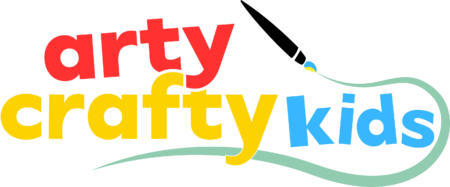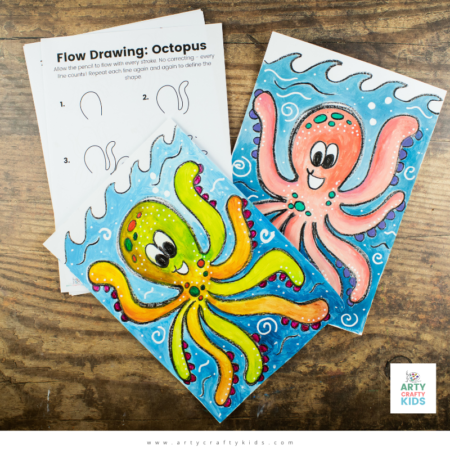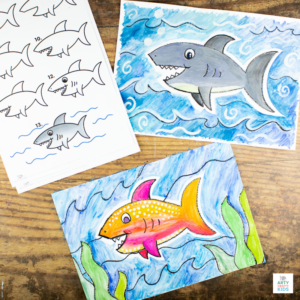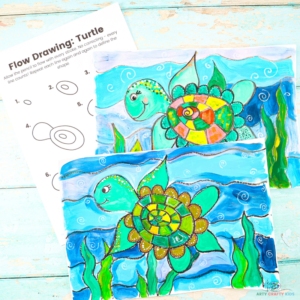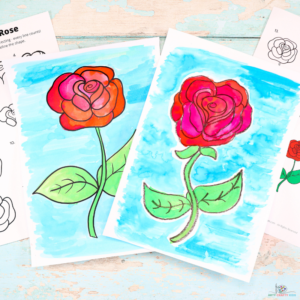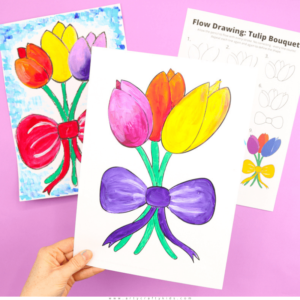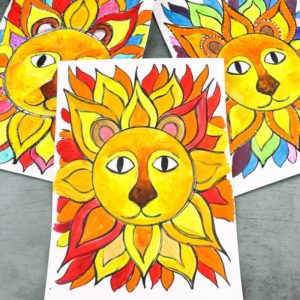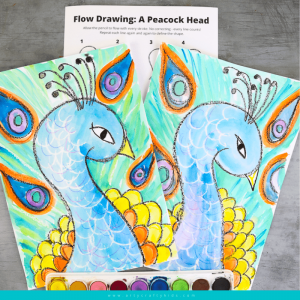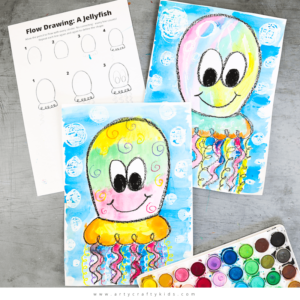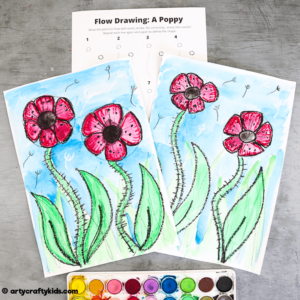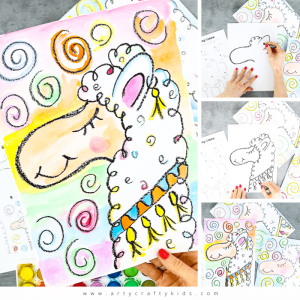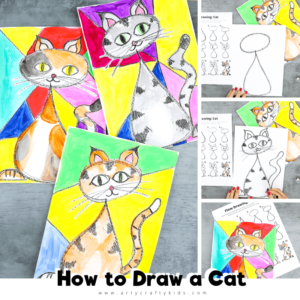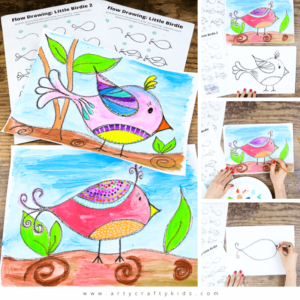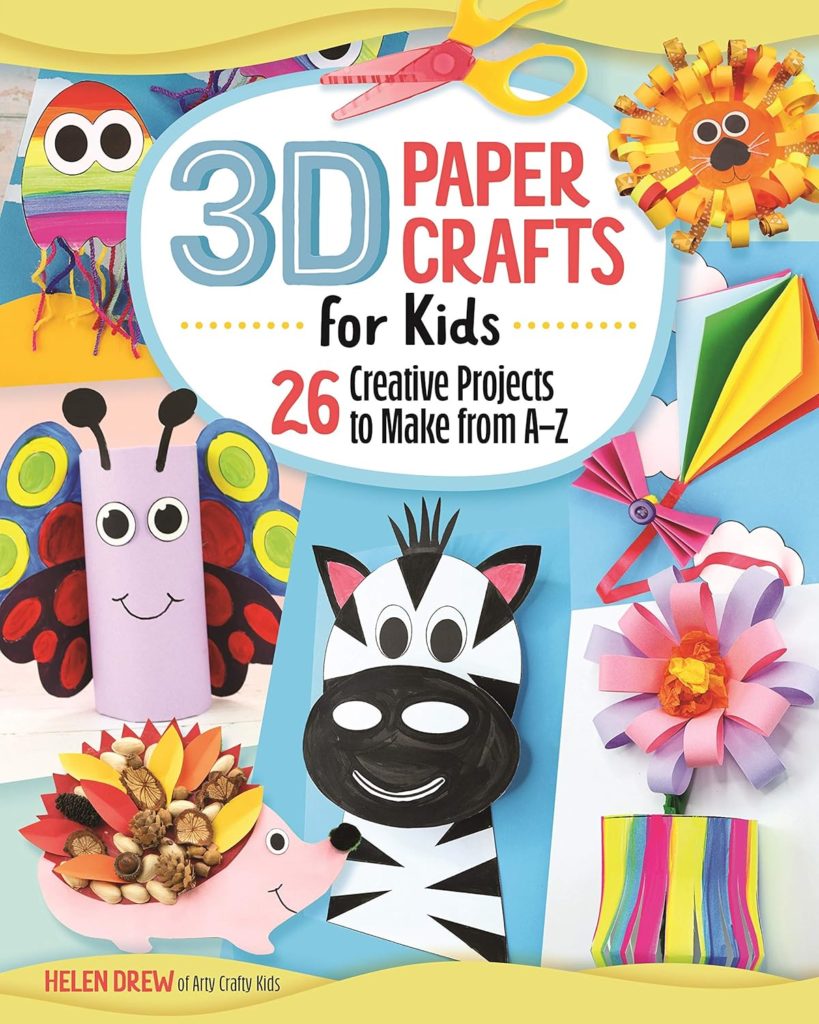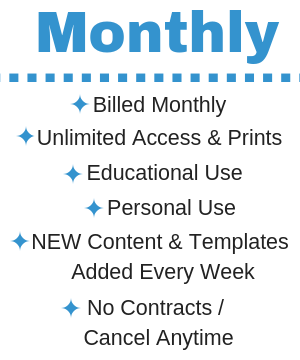Sharing is caring!
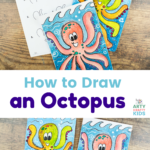

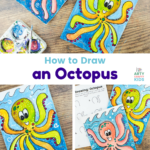
Learn how to draw an octopus with our super simple and fun “Octopus How to Draw” step-by step-guide! Our how-to makes drawing octopi easy and paired with the flow drawing technique, this happy octopus can be drawn in just a few simple steps.
The octopus is such an exciting subject for children to draw, especially in an animated cartoony style as they can experiment with different emotions with just a few small changes to the eyes, mouth and arms. For instance: bold, wide and bright eyes create the impression of a happy octopus. Angular shapes and sharp lines will create the impression of an entirely different set of emotions.
To enhance character and create emotion, the octopuses arms could cross over, be tangled or chaotic, swaying in all different directions. Exploring these little changes can expand the entire how to draw tutorial into a full blown art project that encourages children to use their imagination and think about characterization and story-telling in their design.
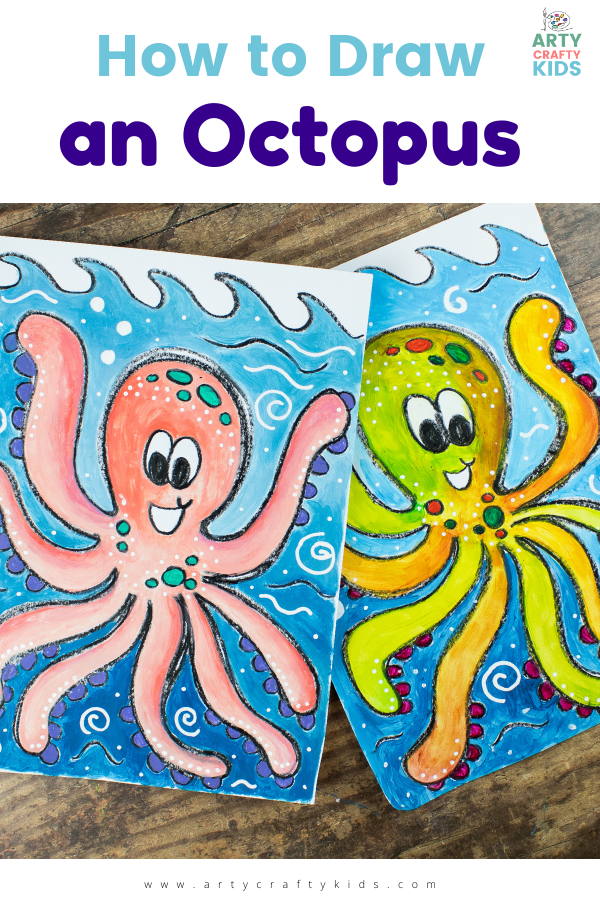
How to Draw an Octopus – Step by Step Drawing Tutorial
This how to draw guide uses the flow drawing technique. Flow drawing is all about drawing with simple lines and shapes that are repeated often to create definition. This technique is perfect for kids and beginners, as it focusses on engaging in the process and developing natural rhythms in creation. Children will use this process to create the simple outline of their octopus and are encouraged to use their imaginations to come up with their own designs.
Materials:
- White Card Stock or Mixed Media Paper
- Wax Crayon or Oil Pastel
- Acrylic or Watercolor Paint
- Black Marker Pen (Optional)
- Acrylic or Chalk Pens (Optional)
Download the Octopus How to Draw Printable
The templates are available to members of the Arty Crafty Kids club.
Members will need to log in to access the templates: https://www.artycraftykids.com/product/flow-drawing-octopus-guide/
Not A Member?
Watch the Octopus How to Draw Video:
Let’s Draw an Octopus!
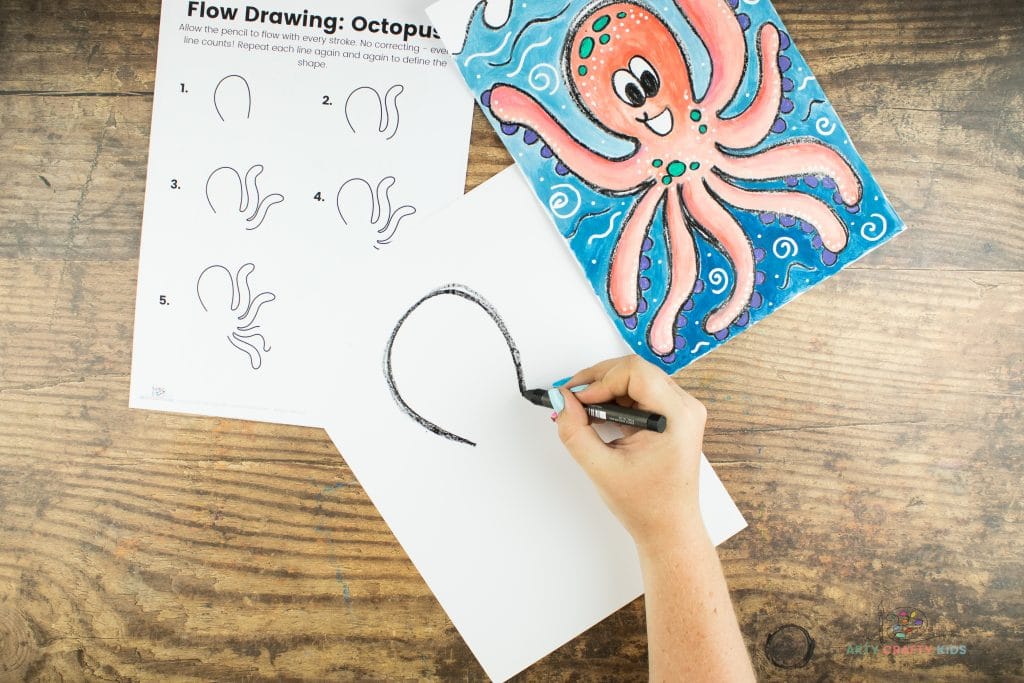
Draw a large oval shaped arch
Grab a crayon or an oil pastel and let’s start by drawing a large oval shaped arch in the middle of the sheet.
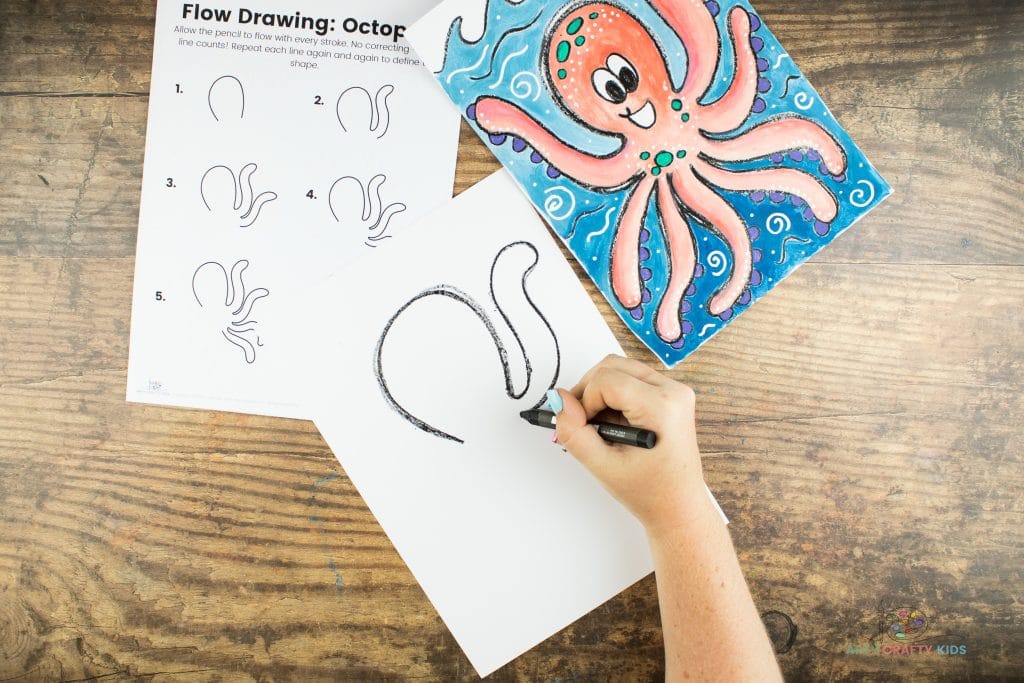
Draw the Octopus’ first tentacle
Next, add the octopus’ first tentacle by drawing a smooth lines. Remember, if the first attempt doesn’t feel right, just flow back over the lines and repeat until you gradually build up and define the shape you want.
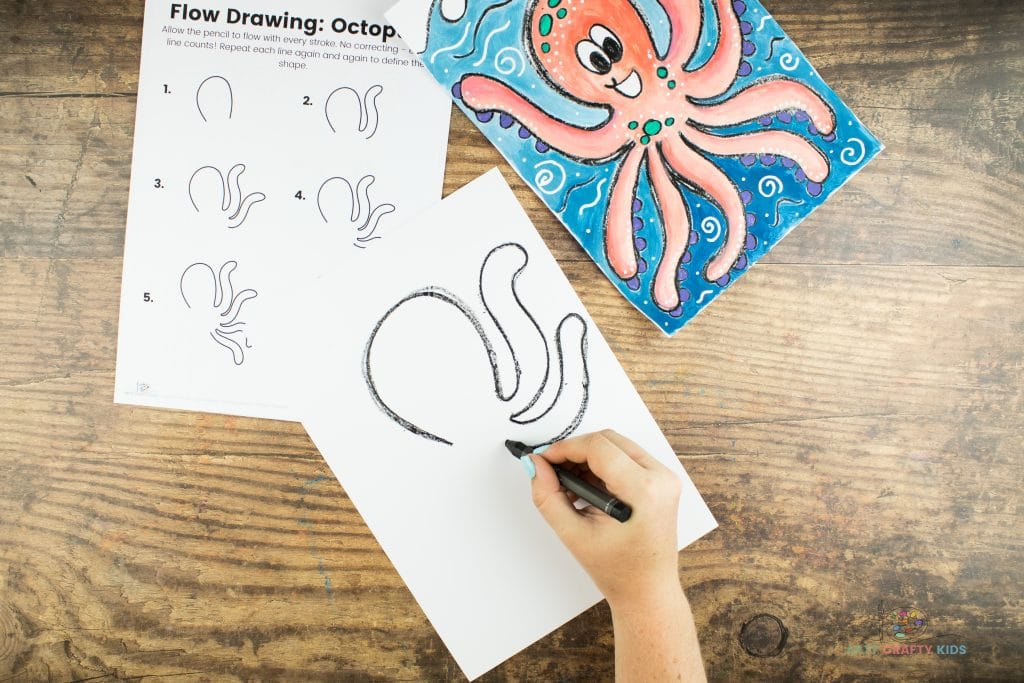
Draw the Octopus’ second tentacle
For the second tentacle, draw a smooth line coming off of the first, and slightly underneath it. Curve the end round to bring the line back to the centre of the Octopus.
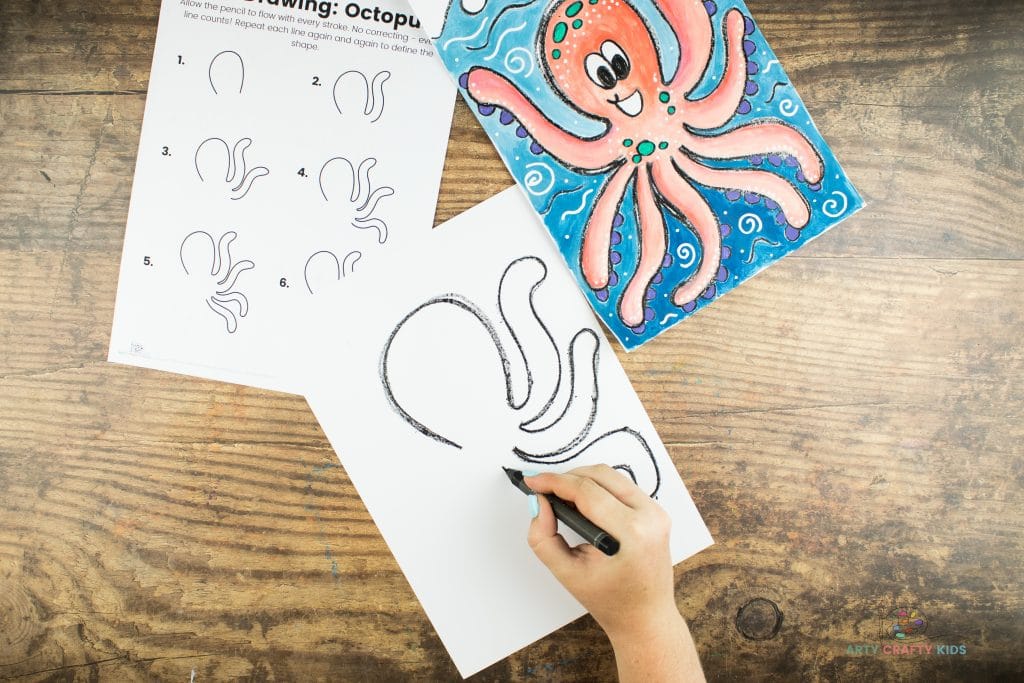
Draw the Octopus’ third tentacle
Then, draw a smooth, flowing line under the Octopus’ second tentacle, to create the third tentacle. Each tentacle can twist or turn in whichever direction you choose.
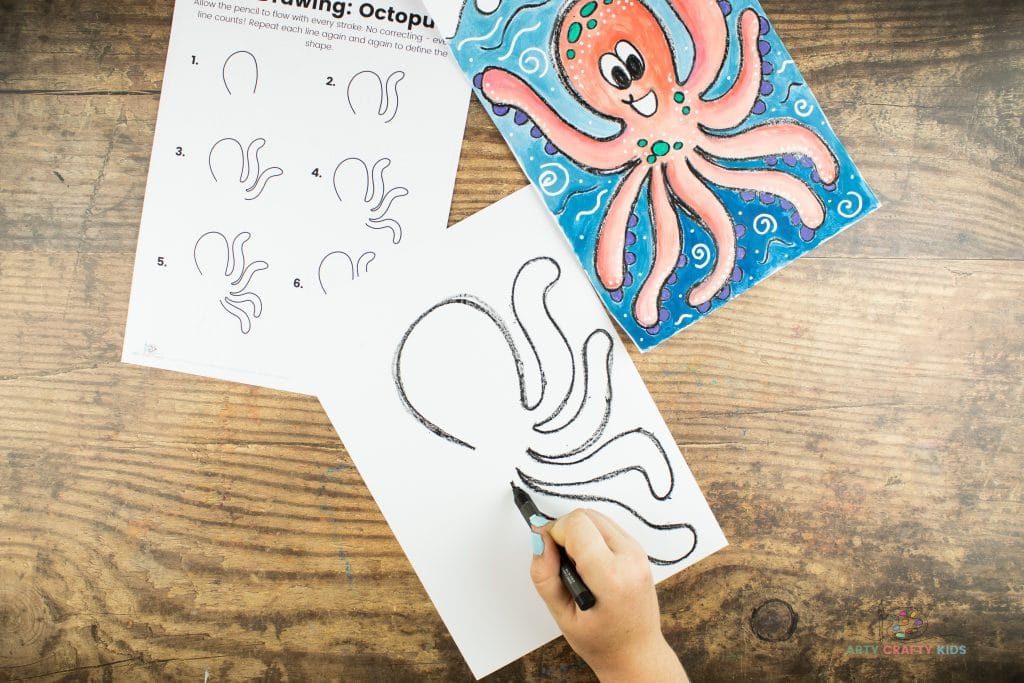
Draw the Octopus’ fourth tentacle
Next, draw the fourth tentacle downwards, off of the third tentacle.
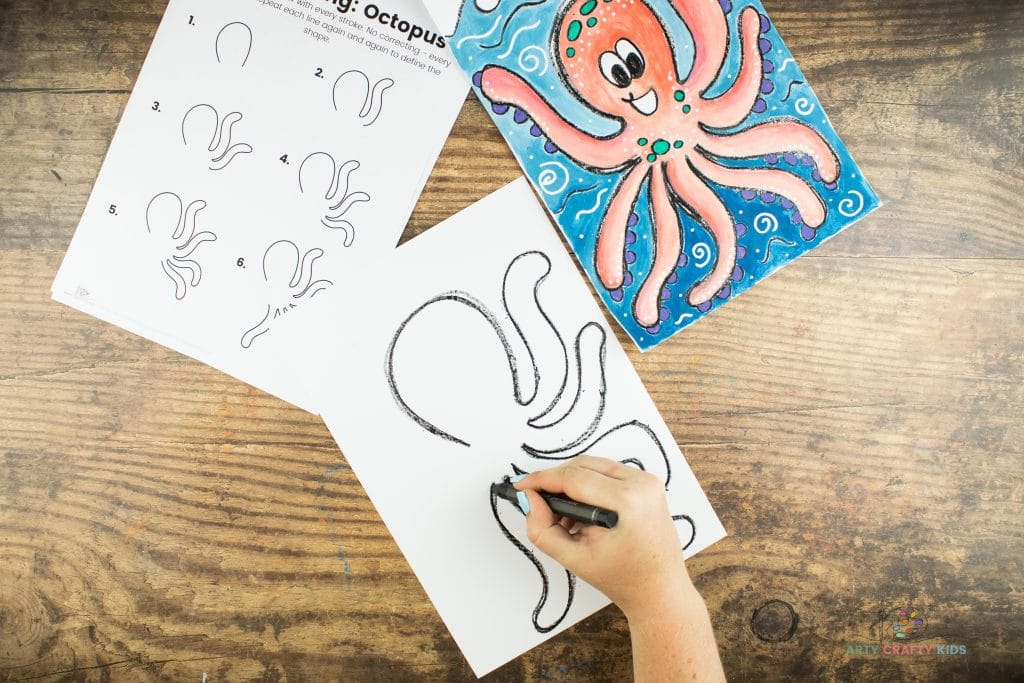
Draw the Octopus’ fifth tentacle
Now, you’ll draw the other side of the Octopus’ tentacles. Add the fifth fluid line down towards the bottom of the page to create the fifth tentacle.
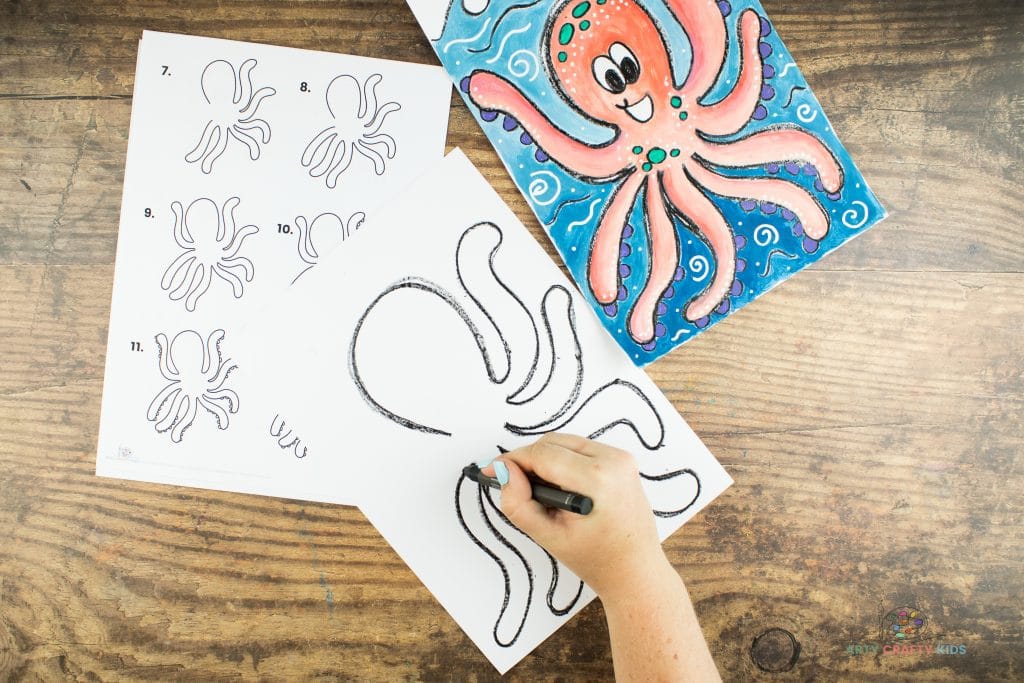
Draw the Octopus’ sixth tentacle
Draw the Octopus’ sixth tentacle heading down towards the bottom left corner of the page. Remember, these tentacles can go where ever you feel right so feel free to experiment!
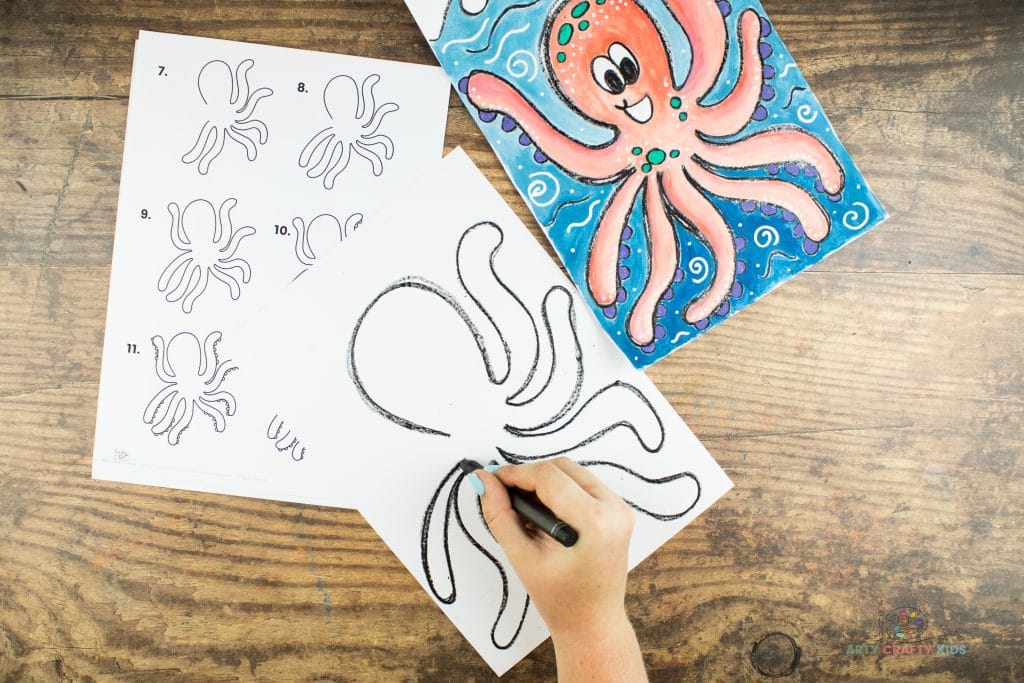
Draw the Octopus’ seventh tentacle
Next, draw the seventh tentacle up above the last one, coming out to the left side of the page.
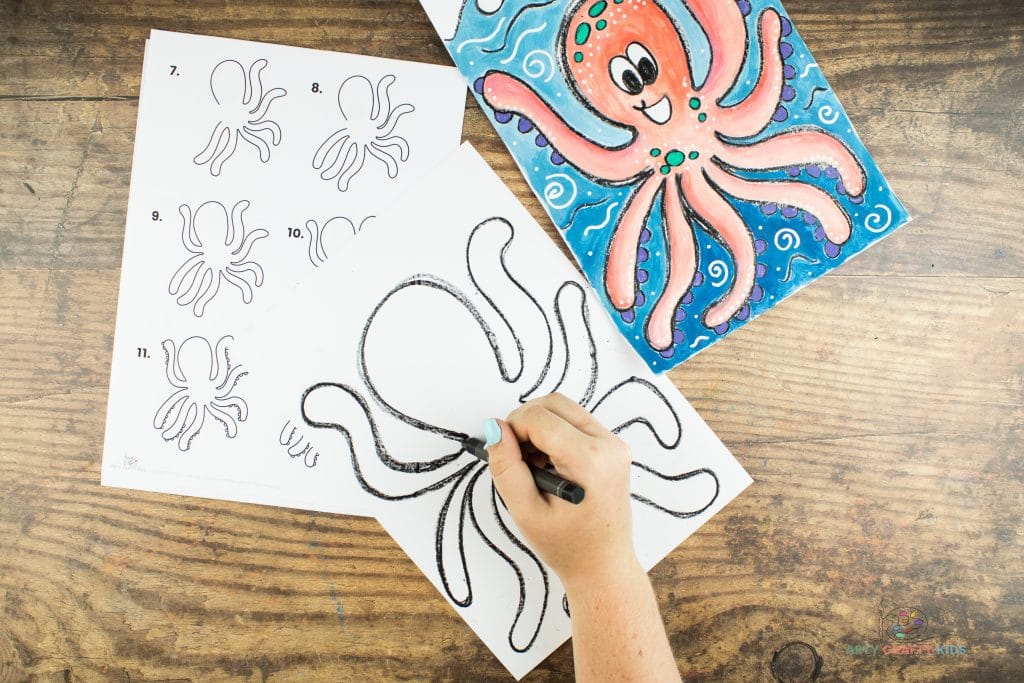
Draw the Octopus’ eighth tentacle
You’ve made it to the Octopus’ final tentacle! Draw the eighth tentacle to the left of the oval arch. Connect it to the tentacle before and the oval arch to complete the outline of the Octopus.
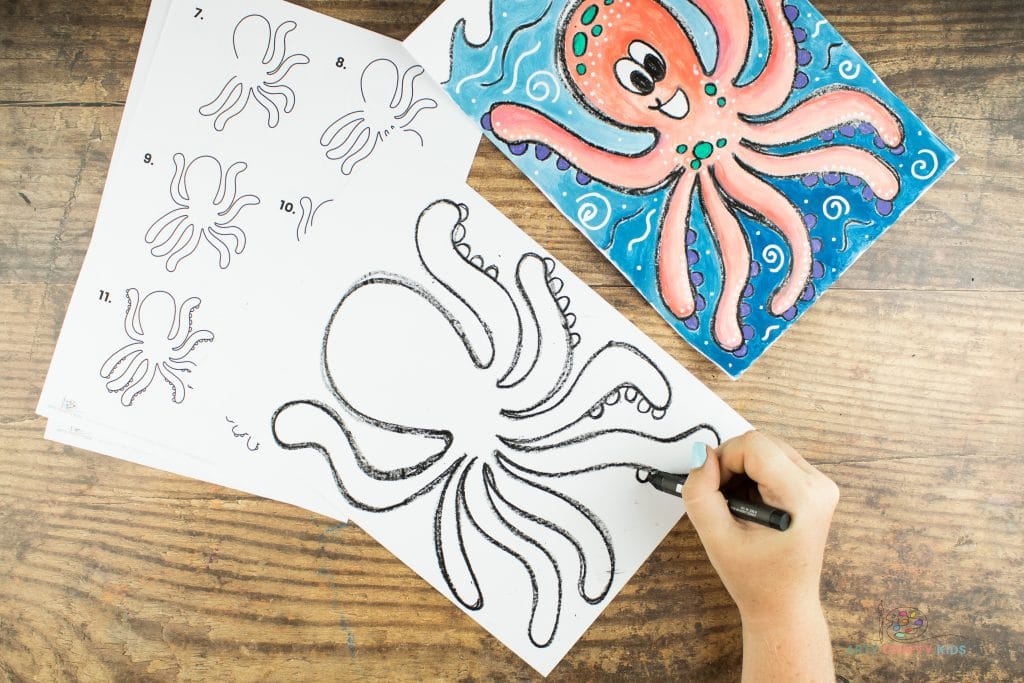
Draw the Suckers on the Octopus’ tentacles on the right
Now move on to drawing the suckers. Start by adding five semi circle shapes on the bottom of each tentacle on the right side of the Octopus. If you feel you want to add more than five suckers, go for it!
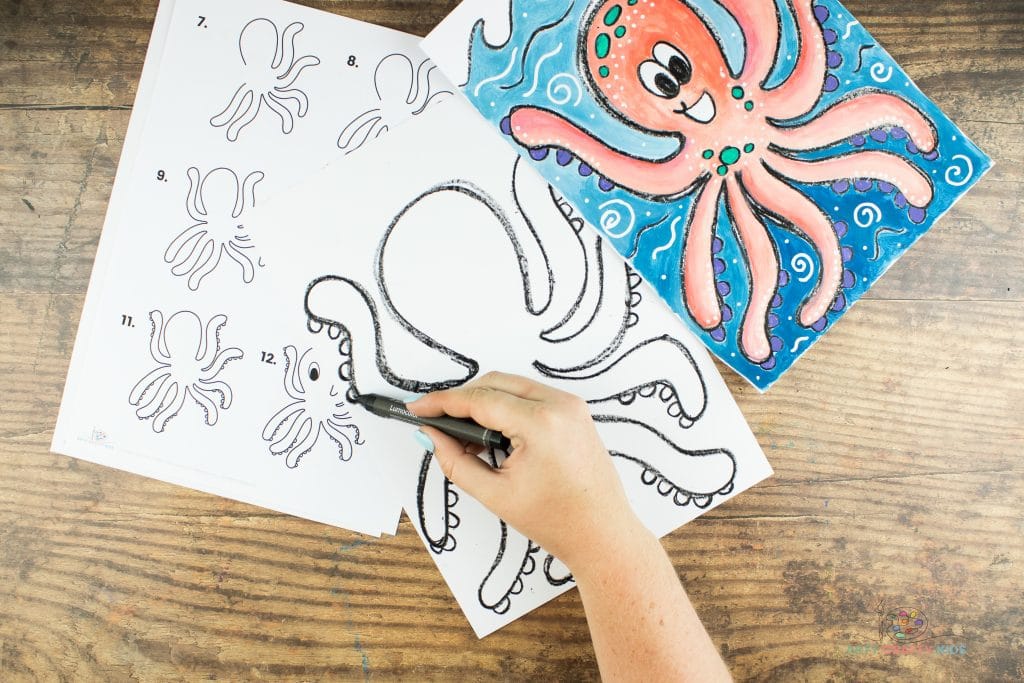
Draw the Suckers on the Octopus’ tentacles on the left
Finish drawing the semi circle suckers on the Octopus’ left tentacles.
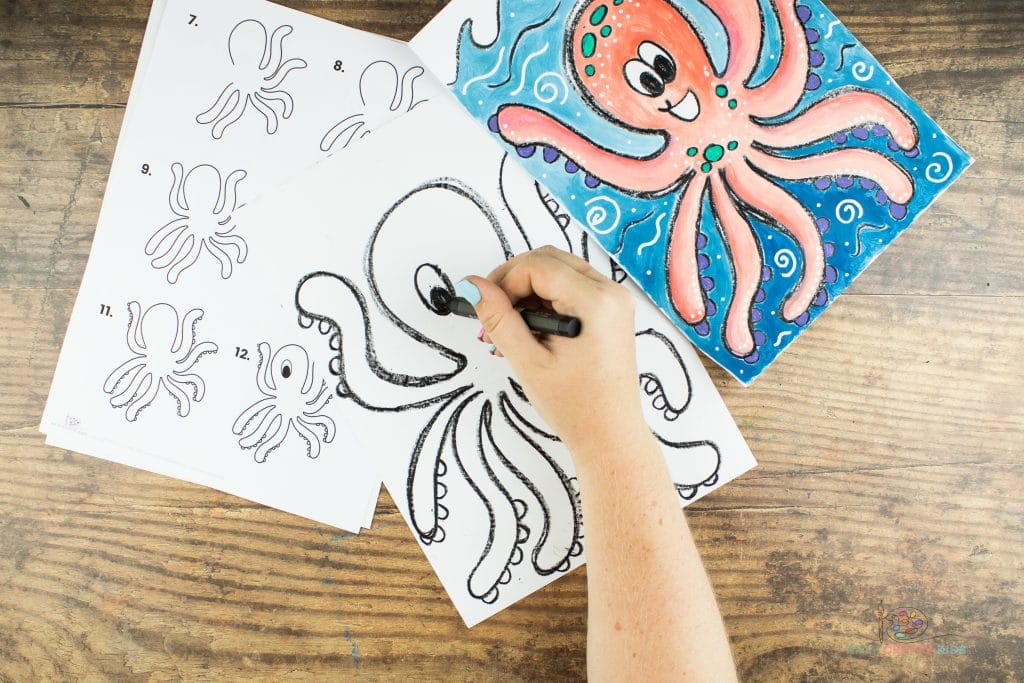
Draw the Octopus’ left eye
Before your children draw their Octopus’ facial features, perhaps take a moment to think about what kind of character they will be. Will you draw bright, circular eyes for a happy friendly Octopus, or will this be a more mischevious Octopus, with sharper eyes and a smirk? Once you’ve decided how this Octopus will look, draw the left eye.
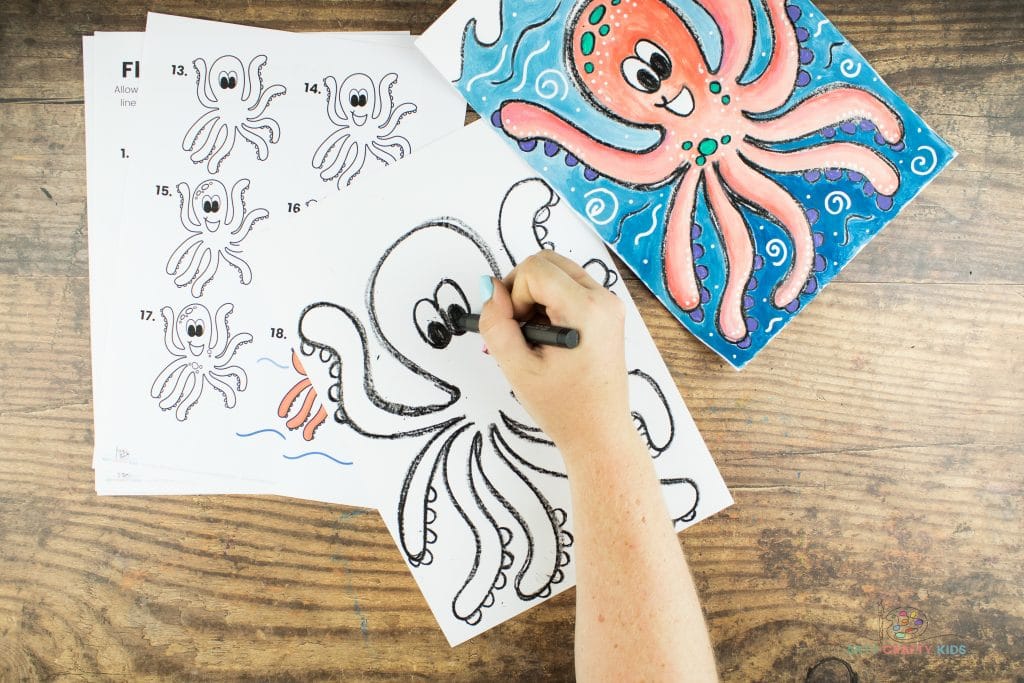
Draw the Octopus’ right eye
Now draw the Octopus’ right eye. In this example the eyes or directly next to each other but have a go at experimenting to get create different characters!
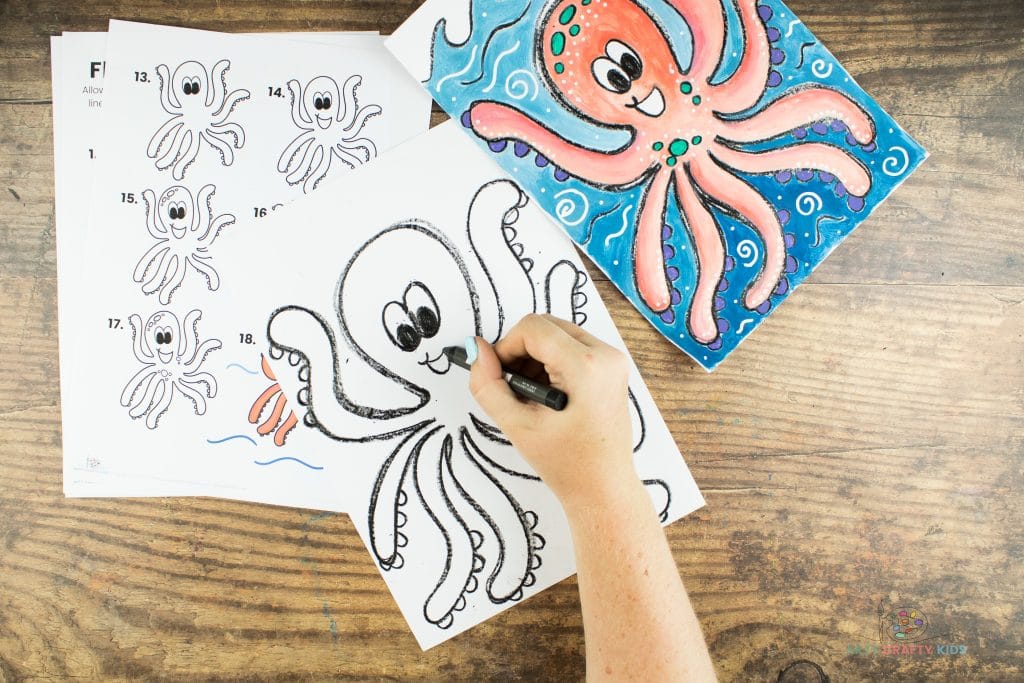
Draw the Octopus’ mouth
Draw the mouth, under the eyes. Here, you can see this Octopus has a very smiley face but feel free to try different emotions, perhaps a frown, or a surprised open mouth, shouting away under the waves!
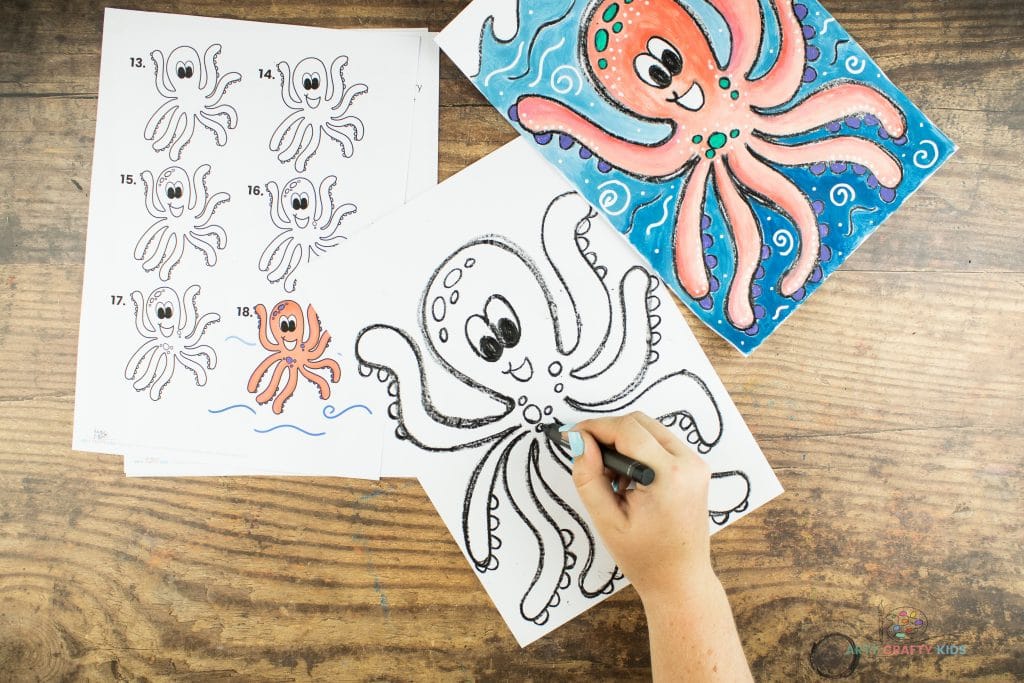
Draw some spots on the Octopus
You’ve reached the final stage of drawing the Octopus! Here you can experiment with adding even more character. Our template suggests adding some spots around the top and middle of the Octopus, but you could try adding different patterns or rings around the tentacles for a unique look.
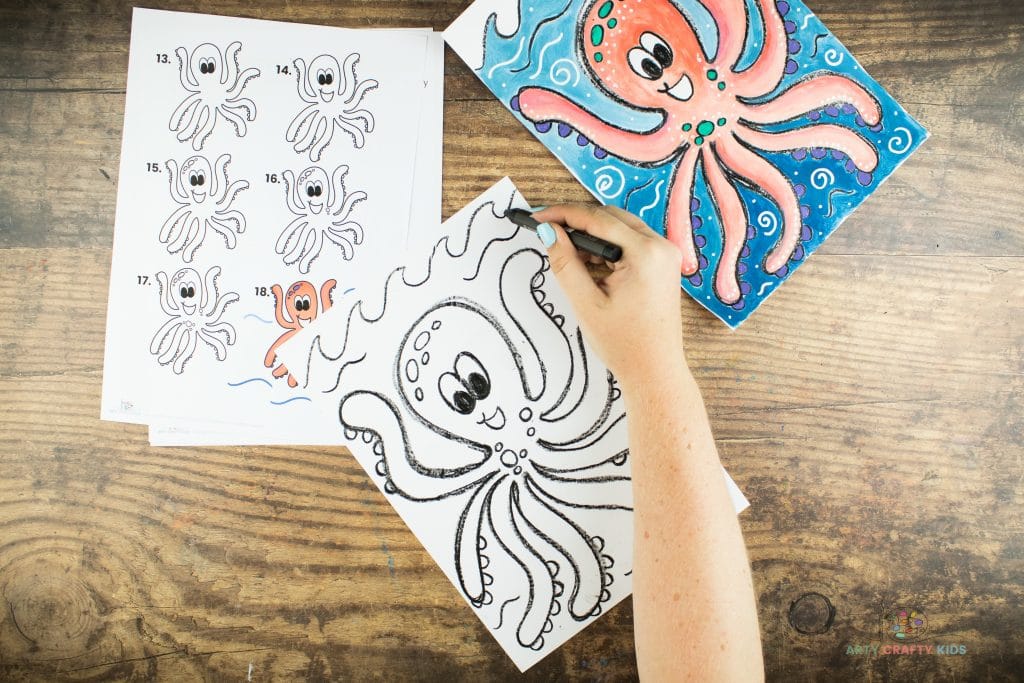
Add an Under the Sea Background
Before painting your finished design, add some waves in the background. You could use smooth, flowing lines and swirls, or sharp zig zags.
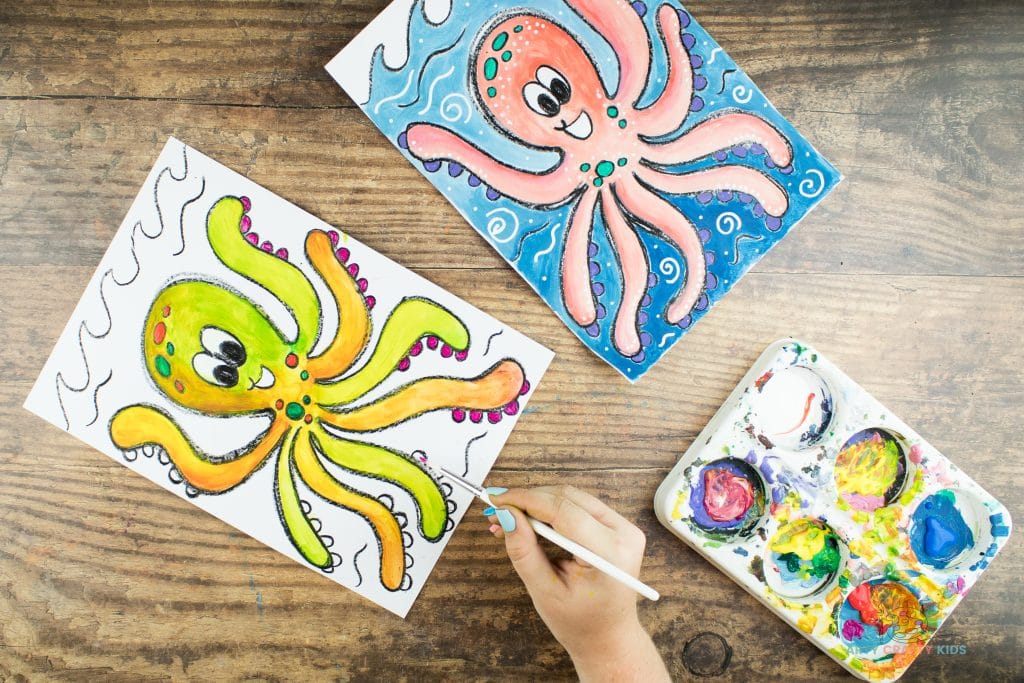
Let’s Play with Colors!
Octopus come in so many different colors, and they are known to be masters of disguise with their amazing color changing skin! So, this is a great design to have fun and experiment with a range of different colors and patterns to bring your Octopus to life!
Here you can see two different colored Octopus that have been painting with bright colored acrylic paints. Wether you chose to use acrylic or watercolor paints, pencils or oil pastels to color your Octopus in, make sure to have fun with the process! There are no strict rules when it comes to adding color to your Octopus but why not take the time to research why Octopus change color and what it means?
Often Octopus have specks or spots of different color on their skin to help them camouflage with their surroundings. Maybe it would be good to try and layer the paints to create these specks? Start off with a base color and then use a dry paint brush to stipple on some flecks of a different color on top.
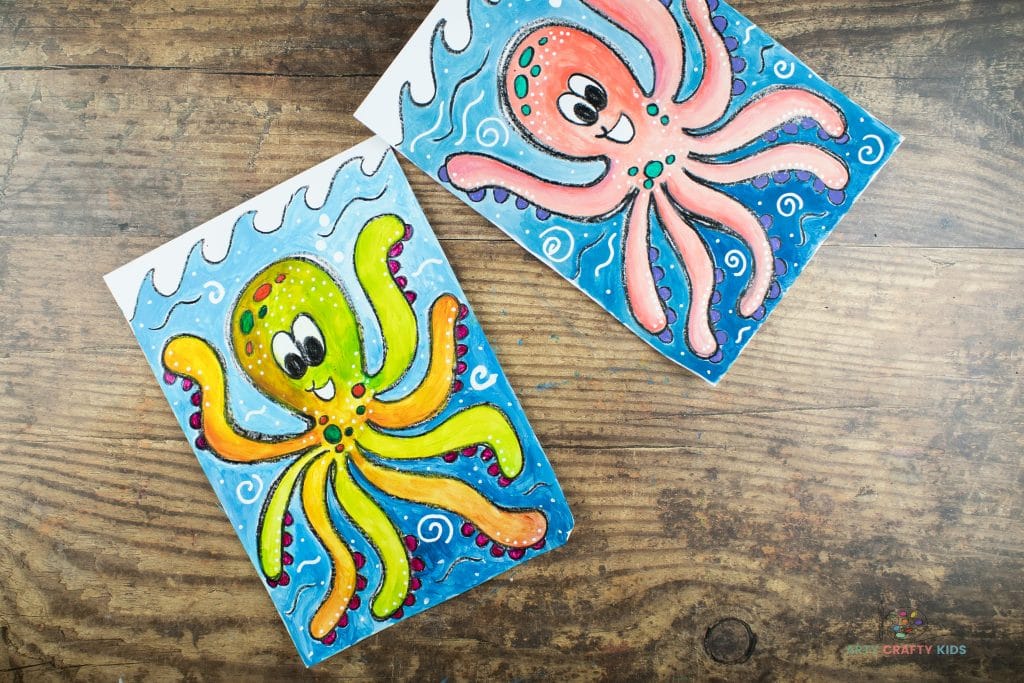
Let’s Play with Resist Art
To add some more interesting details to the background of your drawing, use a white crayon to draw little swirls, spots, bubbles and waves.
Now, brush watercolor paint over the top and around the white crayon. Because wax repels water the watercolor paint will add color around the white crayon but will leave a white space where the crayon has been applied. This is a super neat detail and can be really fun to experiment with!
Continue adding different shades of blue, purple and green to give the background more depth whilst experimenting with colors and paint/water ratios and consistency.
The How to Draw an Octopus Tutorial is Now Complete!
Now your Arty Crafty Kids should have fabulous drawing/painting of a Octopus!
For more under the sea inspired crafty fun, take a look at our Puffy Bubble Wrap Octopus and Black Glue Jellyfish Art
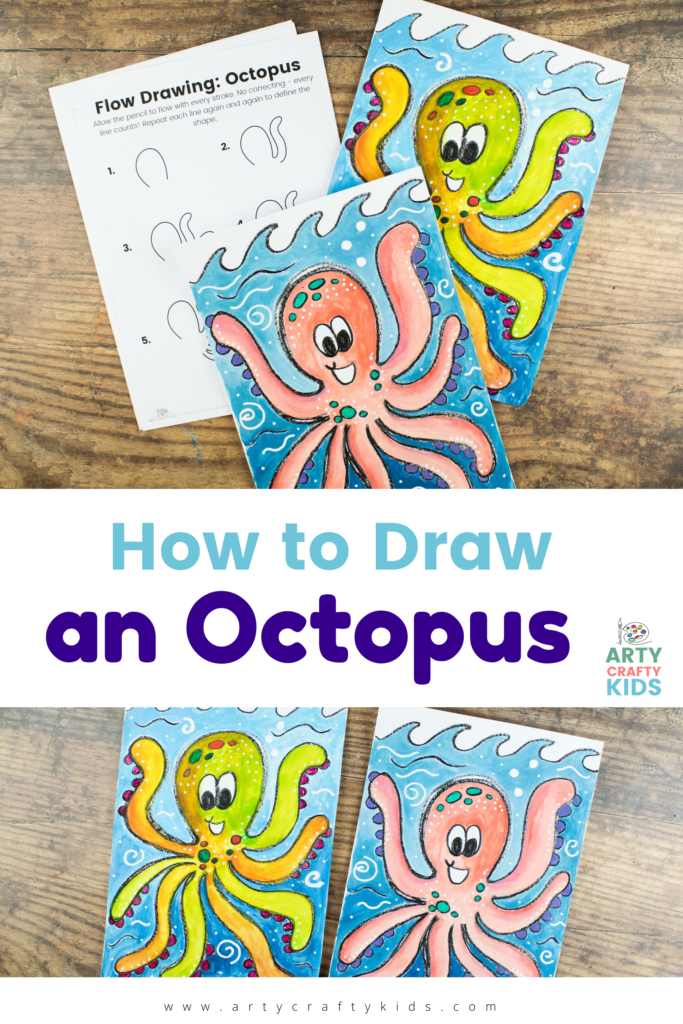
Learn More about the Flow Drawing Technique:
What is Flow Drawing?
Flow Drawing is an art technique developed by us to encourage children to understand shapes and create illustrations, in a much ‘freer’ way.
By removing restrictions, flow drawing encourages children to fully engage in the moment and discover their natural flow, making every line count and bringing mindfulness to their creative process.
You can think of the flow drawing technique as a ‘how to draw’ guide with a difference – children won’t just draw a picture, they’ll create a unique work of art, right from their soul.
Flow Drawing Benefits:
Although the process of flowing more naturally in art might seem a little alien to children at first, it’s really worth encouraging them to have a go. Flow drawing has so many benefits and helps little hands and minds to:
- Explore simple shapes and how they work together to create larger forms
- Discover their natural flow and rhythm through repetitive movements
- Learn how to combine mediums, with a fun and easy approach
- Build confidence in their own creative abilityCombat ‘perfection-seeking’ in art, providing a much needed alternative to rigid ‘how to draw’ guides
- Bring mindfulness to the creative process and boost mental health
- Foster a love of art and self-expression.
More How to Draw Tutorials for Kids:
If you loved our Octopus how to draw guide, take a look at these other popular tutorials!
-
Flow Drawing Shark Tutorial
-
Flow Drawing Turtle Tutorial
-
Flow Drawing: A Rose
-
Flow Drawing: Tulip Bouquet
-
Flow Drawing: Sunshine Lion Art
-
Flow Drawing: How to Draw a Peacocks Head
-
Flow Drawing: How to Draw a Jellyfish
-
Flow Drawing: How to Draw a Poppy
-
Flow Drawing: How to Draw a Llama
-
Flow Drawing: How to Draw a Cat
-
Flow Drawing: How to Draw a Little Bird
-
Flow Drawing: How to Draw a Butterfly
